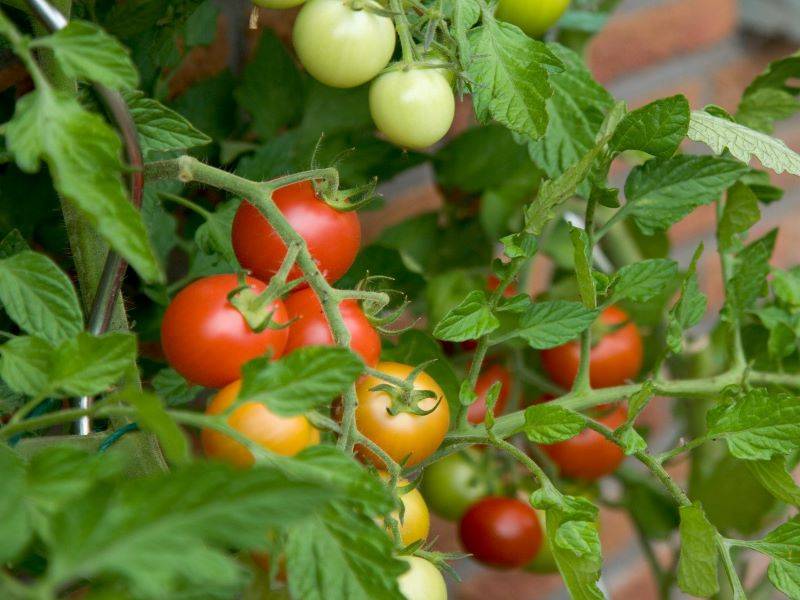
Tomato cultivation in India is one of the most profitable agribusiness. It is the second most important crop of world after potato. Fruits are eaten raw or in cooked form, and contain vitamins like ‘A’ and ‘C’ enriched with antioxidants in abundance. Due to these benefits, tomato demand remains high throughout the year.
Advantages of growing tomato over other crops
-
Short duration vegetable crop.
-
Tomato can be grown in outdoor as well as indoor conditions.
-
Tomato cultivation is well-fitted in different cropping systems of cereals, grains, pulses and oilseeds.
-
Cultivation gives more yields hence high economic value.
-
Tomatoes are nutritionally valuable for their high mineral and vitamin content.
-
Tomato is used widely in a number of processed items, prepared on large scale for consumption as well as for export purpose.
Climate Requirements for Tomato cultivation
The temperature range of 10-25 °C is considered ideal for tomato cultivation. The ideal sowing temperature is 10-15 °C coupled with 400-600 mm rainfall. The best quality tomato, red in colour is developed at 21-24 °C temperature.
Soil Requirements & Land Preparation
Tomato grows very well on a wide range of soils, but it grows particularly well on deep, well-drained soils with good drainage ability. Sandy loam, red soils and medium black soils are considered most suitable for tomato cultivation. For good yield, the pH of soil must be at 7-8.5.
For tomato plantation, land can be prepared to a fine tilth by thorough ploughing 4-5 times and levelling. At time of last ploughing, add decomposed cow dung and Carbofuron (5kg) or Neem cake (8kg), per acre, for optimal soil preparation.

Transplanting & Management
Soil solarization must be carried out for one month before sowing, to destroy harmful soil borne pathogen, pest and organism. This can be done by using transparent plastic film as mulch (the plastic sheet absorbs radiation and as a result increases soil temperature and kills pathogens). Following this, tomato seeds can be sown on raised beds of 80-90 cm width and of convenient length. After sowing covered bed with mulch, irrigate the bed with Rose-Can daily in morning.
Seedling is ready for transplantation 25-30 days after sowing. Water seedling beds 24 hours before transplanting so that seedlings can be easily uprooted. To protect crop from bacterial wilt, dip seedlings in 100 ppm Streptocycline solution for 5 minutes before transplanting.
Sowing
The major tomato producing states in India are Bihar, Karnataka, Uttar Pradesh, Orissa, Maharashtra, Andhra Pradesh, Madhya Pradesh and West Bengal. In Punjab state, Amritsar, Ropar, Jalandhar, Hoshiarpur are tomato growing districts.
-
Time of sowing: For northern state, tomato cultivation for spring season is done in late November and transplanted in second fortnight of January. For autumn crop, sowing is done in July - August and transplanted in August - September. In hilly areas sowing is done in March- April and transplantation is done in April -May.
-
Spacing: Depending upon the variety sowed and its growth habit, spacing of 60x30 cm or 75x60 cm or 75x75 cm should be maintained. In Punjab, for dwarf variety use spacing of 75 x 30 cm and for rainy season use spacing of 120-150 x 30 cm.
-
Sowing depth: In nursery, seeds should be sown at depth of 4cm and then covered with soil.
-
Method of sowing:Transplanting of seedling in main field.
Irrigation Requirements
Tomatoes need irrigation that is just sufficient at the right time, and thus it is necessary to maintain an even moisture supply to the crop. During summer season, irrigation at every 5 to 7 days interval is required, whereas in winter 10 to 15 days interval is sufficient.
Fertilizer & Nutrient Requirements for Tomato crop
At the time of land preparation mix rotten cow dung (10 ton/acre) in the soil. Apply fertilizer dose of N:P:K (60:25:25 kg/acre) in form of Urea (130kg/acre), Single Super Phosphate (155kg/acre) and MOP (45kg/acre). Apply half dose of Nitrogen, full dose of Phosphorus and Potash applied as basal dose, apply it before transplanting. 20 to 30 days after transplantation apply remaining 1/4th dose of nitrogen. Two month after transplantation, apply remaining dose of Urea.
10-15 days after transplanting, spray 19:19:19 along with micronutrient (2.5-3 gm/L) of water. If the temperature is low, the plant will absorb fewer nutrients and growth will get affected. In this case use foliar spray - in vegetative growth stage take spray of 19:19:19 or 12:61:00 (4-5 gm/L). For better growth and more yield, spray with 50 ml Brassinolide per acre in 150L of water at 40-50 days after transplanting for two times at 10 days intervals.
To obtain good quality along with good yield, take spray of 12:61:00 (Mono Ammonium Phosphate 10gm/L) before flowering. To control flower and fruit dropping, spray Boron (25gm/10L of water) as soon as flowering starts. To avoid black spots which are an indication of calcium deficiency, spray calcium nitrate (2gm/L of water). During high temperature if flower drop is witnessed, spray with NAA (50 ppm (50ml/10L water) when crop is in the flowering stage. Further, give one spray of sulphate of potash (00:00:50+18S) during fruit development stage (3-5 gm/L of water) to boost fruit development and colour. Finally, to improve plant growth, flowering and fruit set spray with sea weed extract Biozyme/Dhanzyme (3-4 ml/L water) twice a month.
References:
Punjab Agricultural University Ludhiana
Indian Agricultural Research Institute, New Delhi
Ministry of Agriculture & Farmers Welfare


















